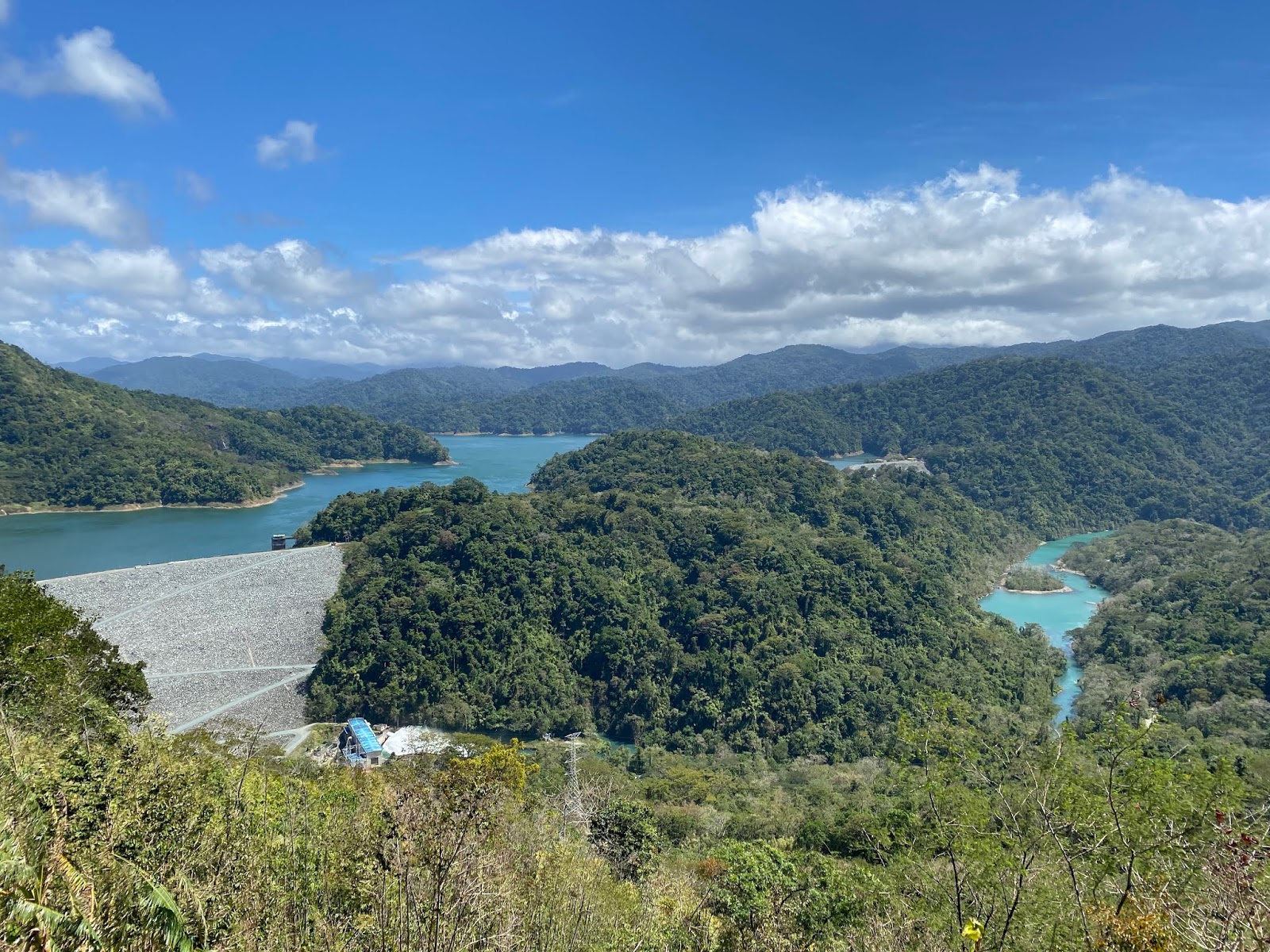MAYNILAD TRIP: Learning about our water supply
Since 2019,
our water problem has been evident with the interruptions that went on for
months, and I personally understand how stressful that can be, given that we,
too, experience the same thing every day. Our water interruption could start as
early at 7:00AM and came back around 4 or 5:00PM. I know some people have
different schedules with regards to this and because I’m not too knowledgeable
in this department, I wanted to be educated further on what’s happening with
our water supply. It’s the main reason why I agreed to join a recent trip to Maynilad
Water Services, Inc. last February 28 to know more about
it. I’m sure many are curious too, so sharing here on the blog our day with Maynilad!
Fact
check:
For those of you who don’t know, Maynilad
Water Services, Inc. is managed by DMCI-MPIC Water
Company, Inc. and is the water and wastewater services provider for the
West Zone of the Greater Manila area: Manila (certain areas), Quezon
City (certain areas), Makati (all except Sta. Ana and San
Andres), Caloocan, Pasay, Parañaque, Las Piñas, Muntinlupa,
Valenzuela, Navotas, Malabon – all in Metro Manila; the cities of Cavite,
Bacoor and Imus, and towns of Kawit, Noveleta and Roasario
– all in Cavite Province. It is the largest water concessionaire in terms of
customer base in the Philippines.
Maynilad’s customer
base has expanded to 1,453,979 service connections or more than 9.7 million
people.
So, why did we have daily water
interruptions that lasted for months?
Last week, together with my fellow
blogger friends, I had the opportunity to visit Maynilad’s La Mesa
Treatment Plant, as well as the Angat and Ipo Dams, to learn about
and discuss our water source.
Upon getting to the La Mesa Treatment
Plant, we were quickly briefed about safety and the Do’s and Don’ts
once we get to Angat. Once done, off we went!
ANGAT
About 91% of Maynilad’s raw
water supply comes from Angat Dam, which is located in Norzagaray, Bulacan.
The remaining 9% comes from Laguna Lake.
Since this is all new to me, I honestly
didn’t expect our water source to be this vast and picturesque. It is indeed
natures finest! I’m glad that they stopped allowing random visitations here
because somehow this way, we can keep it safe and clean. Now, only people with
permits from NPC are allowed to visit the place.
LEFT: Angat Dam | RIGHT: Ipo Dam
The water in Angat is classified
as CLASS A. Meaning, it is easy to treat and has less impurities.
Admiring the amazing structure of Angat
Dam with Ate Marj.
At Angat Dam, we were greeted by Engr. Rodel
Tumandao,- Maynilad’s Water Source Head. He
educated us on raw water supply, water supply situation today and what are the
necessary measures they’re taking for us to have enough allocation of
water.
The Angat Dam as we were told by Sir Rodel
Tumandao, is a multi-purpose dam managed by the Angat Hydropower
Corporation and is used for three purposes:
· Power
generation
· Irrigation
through the National Irrigation Authority (NIA)
· For
domestic water supply through Metropolitan Waterworks and Sewerage System
(MWSS)
From Angat Dam, raw water flows
downward to the much-smaller Ipo Dam and, eventually to the Novaliches Portal where
the water is divided between the two private water concessionaires of the MWSS,
which includes Maynilad.
This area with water goes to the MWSS
and onto Ipo Dam.
In case it also has not come to your
knowledge, The National Water Resources Board (NWRB) is the government
agency responsible for determining the allocation of raw water supply from
Angat Dam for MWSS and NIA. It isn’t Maynilad that has a
say in this. They are only in charge of treating our water to make sure it is
safe to use and that we get the supply allocated for us by the government.
So, when Maynilad is given
less than its usual raw water allocation, it is constrained to maximize the
limited supply by rotating it to the different areas within its concession, so
that customers will have an opportunity to store water. Earlier this year, the
raw water allocation for the Metro Manila concessionaires, which includes
Maynilad, was only 42 cubic meters per second (cms), which is lower than the
normal allocation of 48 cms. As of March 12, 2020, the NWRB has increased
allocation to 46 cms, in response to government’s call to prevent the spread of
COVID-19. Although still short of 48 cms, the increased water allocation will
now enable Maynilad to suspend the daily supply interruptions or keep it within
off-peak hours. While this is good news for us water consumers, let’s hope that
this move of NWRB does not deplete the water supply in Angat Dam before the
rains come.
IPO DAM
After our tour to both dams, we headed
back to the La Mesa Treatment Plant to meet Engr. Ronaldo Padua, Maynilad’s
Water Supply Operations Head. He discussed with us further about
the water supply and shortage.
With Sir Ronaldo Padua
So, now, onto the most important
questions that everyone has been asking and wondering. Why was our water
supply irregular prior to NWRB’s increase of our raw water allocation?
Why did we have rotation of supply? When will our supply be
normal again?
Since rains have been scant lately or
not as frequent and having experienced El Niño too, last June 2019, the NWRB
made a decision to reduce raw water allocation for the MWSS in an effort to
preserve the remaining water in Angat Dam, which plunged to below-critical
levels. Today, it is a little over the minimum operating level but still lower
than the ideal level, especially since we expect increased water consumption
when summer comes.
Engr. Padua explained that as much as possible,
they try to educate customers on the supply rotations by posting service
interruption schedules online and announcing it on TV and radio via interviews.
He said that they try to follow the announced schedule so that customers can
store water that they can use until the service resumes. Like I mentioned
above, we used to experience water interruptions every day, so once we got used
to that schedule, we made sure to have enough water until our supply comes
back. Take note, it is important to only store enough water for our needs
during hours of the day when supply is unavailable. Storing more than what is
necessary might cause an increase in your water bill and will definitely affect
the schedule of the other customers (kumbaga, mauubusan sila, kaya minsan
nagkaka-delay sa balik ng tubig).
Some people also wonder why there are
different schedules of daily service interruptions per area. Well, this is
dependent on the hydraulic configuration of pipelines
– some areas will experience longer or shorter service interruptions owing to
their location. (ex. Areas that are low in elevation, are near Maynilad’s
reservoirs and pumping station, and are conduits to reach fringe areas will
naturally have shorter service interruptions.). Basically, topography comes
into play. Low-lying areas also feel the supply resumption earlier than those
in highly elevated areas because water pressure in the pipelines needs to
stabilize first before the supply can be pumped up to mountainous areas.
With the ever-changing environment,
rain is a huge factor in all this. If rain remains scant, or if it doesn’t rain
as much at the Angat and Ipo watersheds, the water level in our dams will not
increase, and that is something difficult to remedy even for our water
concessionaires. Especially now that Summer 2020 is coming, our water demand
naturally increases. Will our water supply go back to normal anytime soon?
Hopefully, when the rainy season starts, it can. But for now, interruptions are
seen to become a norm every summer until a new major raw water source besides
Angat Dam will be built by the government. Meantime, Maynilad is doing its
best to find other short-term water sources in preparation for the summer
months via the following mitigating measures:
1.
Optimizing its Putatan Water Treatment
Plant 1 – Maynilad’s first facility to draw water from Laguna Lake since
2010.
2.
Commissioning Putatan Water
Treatment Plant 2 – Maynilad’s second treatment plant
that also draws water from Laguna Lake.
3.
Reactivating deeps wells – Maynilad
has been reactivating existing deep wells within its concession area, using
additional treatment technology to make the yield potable. Though this is only
for specific areas and under strict management since over-extraction of
groundwater may have an adverse effect on the environment.
4.
Sustaining reduction of water losses – Maynilad
inherited one of the oldest pipe networks in Asia, with some segments dating
back to Spanish times. After pouring millions worth of investments, the company
has already replaced over 2,500 kilometers of old pipes and repaired more than
360,000 pipe leaks since 2008. These efforts result in supply recovery for
distribution to customers.
5.
Purchasing modular treatment plants
that will get additional raw water from rivers in Cavite
6.
Deploying mobile water tankers and stationary water tanks
7.
Conducting cloud-seeding operations
While these are some of Maynilad’s present
solutions to ease the impact of water shortage this summer, the MWSS is still
working on an ultimate solution, and that is to develop an additional raw water
source - similar in scale as Angat Dam, to ensure long-term water security and
reliability for Metro Manila and nearby provinces.
Yes, I know how stressful it is to not
have water the moment you need it. This is really hard for the majority of
people who need to get to work and school early or even have places to go in
the middle of the day (well, now that there’s a community quarantine due to
COVID-19, it’s a different situation of course). We just have to make sure that
our stored water is enough for the whole family to be able to take a bath or for
necessary sanitation usage.
To be honest, it was and still is
difficult for us to adjust to this new norm that Maynilad is
constrained to implement. But after what we learned on this trip, I believe as
consumers, we can also help them in managing supply by using water responsibly,
because if we don’t, it will have a big impact in the future.
Together, let’s try our very best to have
NWRB increase our raw water allocation again to 48 cms by saving water!
For more information and updates, visit www.mayniladwater.com.ph or their FB
Page: Maynilad Water Services, Inc.





















0 comments♥
Thank you so much for reading my blog and for leaving lovely comments. Will also try my best to drop by your blogs!:) xo